Portfolio
PRIME
C++
Python
C#
DIS




The Predator/Reaper Integrated Mission Environment (PRIME) desktop training simulation addresses the challenge of limited access to comprehensive simulators, particularly for fundamental Remotely Piloted Aircraft training at Air Education and Training Command based at Randolph Air Force Base, Joint Base San Antonio, Texas. PRIME is a cost-effective, networked PC configuration that emulates the functions of an MQ-9 Ground Control Station for both Pilots and Sensor Operators, suitable for classroom or laboratory settings.
PRIME employs a scalable software architecture that caters to various deployment scenarios, ranging from solo, off-line task-training with a single laptop to a full-fledged, multi-computer simulation environment for combined pilot, SO, and instructor training. The software accurately replicates all displays, menus, and functionalities of the MQ-9 Reaper systems including weapons, EO/IR sensor operations, satellite delay, and more, ensuring an authentic experience.
PRIME has proven to be a valuable tool in enhancing the training experience and preparing personnel for their roles in operating RPA. It allows more of the school’s enlisted sensor operators and their counterparts in the pilot pipeline to train together in a realistic environment. The Air Force was able to double the number of pilot graduates through utilization of PRIME.
My role was leading development teams through completion of the two most recent contact periods. This included accurizing aircraft characteristics within the proprietary C++ based flight simulator. I also created a C# application allowing an instructor to view the aircraft status of any student within their classroom over the network significantly increasing productivity.
PROTEUS
C++
Unreal Engine
Linux



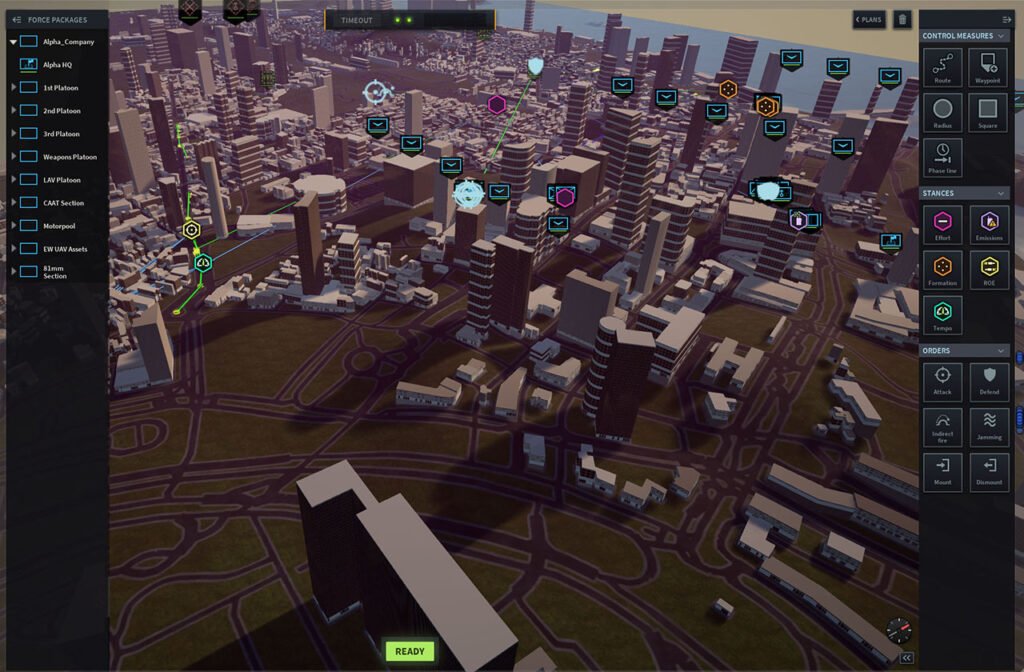
The Prototype Resilient Operations Testbed for Expeditionary Urban Operations (PROTEUS) is a DARPA initiative focused on developing advanced technologies and strategies for conducting military operations in urban environments. PROTEUS enhances the resilience, adaptability, and effectiveness of military operations in urban settings by exploring innovative approaches and technologies. This includes developing new tools, systems, and methodologies that can improve situational awareness, facilitate decision-making, and enable rapid adaptation to changing circumstances.
By leveraging cutting-edge technologies and conducting realistic experiments and simulations, PROTEUS aims to advance the understanding of urban warfare dynamics and provide valuable insights for military planners and operators. The program emphasizes the integration of advanced sensing technologies, data analytics, autonomous systems, and human-machine interfaces to create a comprehensive operational testbed for urban operations.
Upon the completion of testing, DARPA transferred PROTEUS to the Marine Corps Warfighting Laboratory in Quantico, Virginia. Using the PROTEUS software, marines are able to visualize and manipulate their electromagnetic footprint, apply logistics support automation, and obtain quantitative analytics on the effectiveness of force packages and tactics in real time.
My work spanned both the Unreal Engine client and C/C++ based Linux server often implementing the front-end and back-end of new systems. An example is unit and formation movement. Suitable vehicles capable of transporting everyone first need to be identified. Next an efficient route is calculated based on available terrain types and vehicle capabilities. Finally they must realistically react to dynamic obstacles such as rubble blocking the current path or an enemy ambush.
STIGS
C++
Unreal Engine
JavaScript
C#


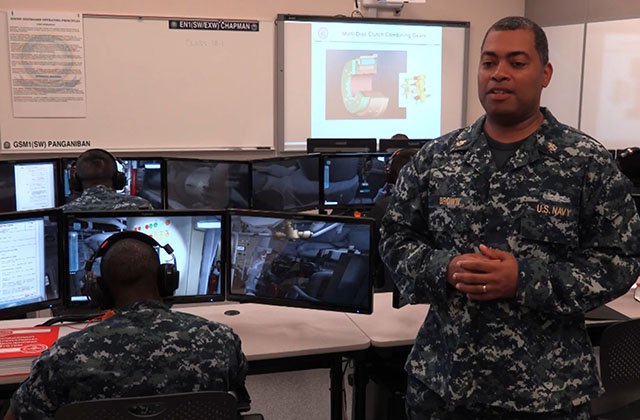

Surface Training Immersive Gaming and Simulations (STIGS) is a scalable game-based learning platform that supports the U.S. Navy’s Littoral Combat Ship program by immersing trainees in a cutting-edge, 3-D virtual environment, teaching tasks in settings virtually identical to real-life, shipboard scenarios. This approach familiarizes sailors with navigating operational environments, and teaches them to perform their watch duties before ever setting foot on the ship.
Students interact with their environment and one another as they run through operational/emergency procedures and maintenance tasks. When students get to their ship, they’ve already developed the muscle and mental memory to transition from the virtual to real world.
A common baseline and tools allow instructors to track students through the entire spectrum of training, empowering them to identify and correct any learning deficiencies that arise. Additionally, it allows for remote teacher-student interactions. This is ideal where students are geographically separated, allowing them to receive quality support as if they were sitting in the same classroom as the instructor.
The Total Learning Platform (TLP) allows the customer to train sailors on procedures that are required for skill set qualification. The student is provided training content at the point of need on a personal laptop or through a desktop in a classroom environment. Robust analytics also support the individual and supervisory assessment of training performance while recording student performance for continuous use across their training continuum. With its highly customized learning experience, TLP empowers students to learn and acquire skills faster, enhance their performance, and achieve workforce readiness and proficiency.
The STIGS client is built upon Unreal Engine. I performed a wide range of tasks involving Unreal blueprints and associated C++. Verbal communication methods utilized unique audio effects and mixes. Manipulation of world objects such as valves required blending inverse kinematics with character animations. Incorporating speech recognition automatically grading student radio responses. Recording student actions and object status for after action report playback.
SCOPIC
C#
DIS
TCP/IP




SCOPIC allows the user to deliver complex tactical training at the individual, team and collective levels. Battlefield capabilities that are would otherwise be precluded by cost, scarcity or safety in live collective training are replaced with state of the art tactical simulation.
Area Weapons Effects Simulator (AWES) simulates large-scale force-on-force combat engagements, including the effects of direct and indirect fire, mines, and air-delivered munitions. AWES also tracks the actions and positions of soldiers and vehicles with Multiple Integrated Laser Engagement System (MILES) technology.
Synthetic Wrap expands the instrumented live training environment by adding virtual and constructive training systems, allowing the soldier to train with platforms and deliver effects that . Hand-held observation devices provide visualization of fall of shot from guns, missiles, mortars and air-delivered weapons. Emulated radar and electronic warfare terminals allow soldiers to locate the enemy.
Diverse military systems and technologies are seamlessly supported, allowing forces from different services or even nations to train together. This proven interoperability, which allows the inclusion of maritime, air and other effects from live or virtual platforms, ensures that joint training exercises can be executed without the challenges of system integration, enabling smoother and more effective collective training.
SCOPIC has been deployed globally in support of the British Army. The system is currently supporting training at Salisbury Plain Training Area (SPTA) in the United Kingdom, British Army Training Unit Suffield (BATUS) in Alberta, Canada, and British Army Training Unit Kenya (BATUK).
Communication between disparate systems utilizes Distributed Interactive Simulation (DIS) application protocols. Unfortunately individual military manufactures do not always follow enumeration guidelines established by the Simulation Interoperability Standards Organization (SISO). I was tasked with development of Shrike, an efficient C# network application which automatically corrects these values in real time during live training exercises. It also enhances data such as introducing estimated unit orientation based on movement direction improving battlefield visualization during after action reviews.
SYN-ISR
C++
Unreal Engine
C#
Android

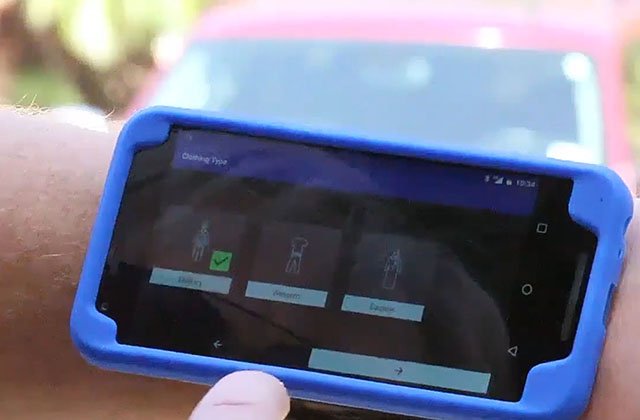


The Synthetic Intelligence, Surveillance and Reconnaissance (SYN-ISR) toolkit is unlike traditional simulators because it incorporates live actors into dynamic, realistic environments. It is ideal for military and law enforcement operations conducted in locations with restricted airspace yet depend on aerial ISR support and display of full-motion video (FMV) to show target positions and provide operational clarity.
SYN-ISR is utilized for training exercises, mission rehearsal, and evaluation of operational plans for anti-access/area denial locations and other austere environments. It brings the live on-the-ground situation into the operations center. Sensor FMV is provided in the same format as operational platforms, allowing use of persistent analysis and consumption software. Custom actors, vehicles and behaviors are supported, illustrating unique events customizable to each scenario.
I implemented several features requiring new functionality in the Android phone app, server C++ code handling the resulting messages, and Unreal blueprints for in-world response. An example is entering a specific automobile door. In another case, the phone app reads near-field communication tags placed on building entrances to toggle character visibility as the user transitions between indoor and outdoor space.
I also created a C# based tool which produces a dataset of hourly sun positions over several months. Users specify the training exercise location with either latitude/longitude or Military Grid Reference System coordinates. The resulting data allows accurate positioning of Unreal lights duplicating the real world location on simulated ISR FMV.
DC Universe Online
C++
Unreal Engine
Linux



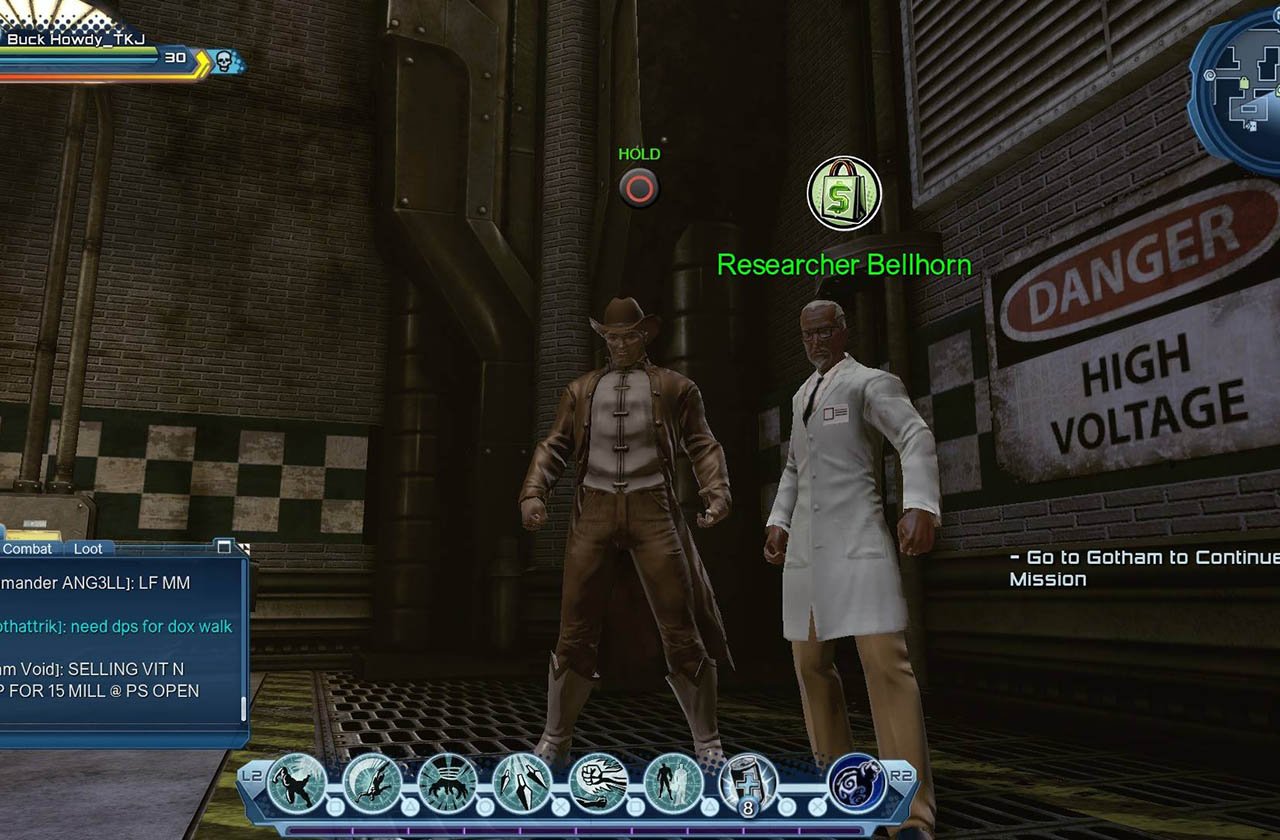
DC Universe Online (DCUO) is a free-to-play action combat massively multiplayer online game set in the fictional universe of DC Comics. Developed by Sony Online Entertainment and WB Games, the game was initially released in January 2011 for Windows and PlayStation 3.
The player creates a new, original character by choosing their character’s faction (Hero or Villain), movement mode (flight, acrobatics, speed or skimming), weapon, and power (fire, ice, gadgets, mental, nature, sorcery, earth, light, electricity, rage, quantum, celestial, munitions, atomic, and water).
Walk along the darkened streets of Gotham City. Investigate the mysteries of the futuristic cityscape of Metropolis. Travel to legendary locations such as Arkham Asylum and the Watchtower. Fight alongside and against your favorite DC characters including Batman, The Joker, Superman, Wonder Woman, and Harley Quinn.
I implemented many gameplay systems during early development and later in live updates. An example is assignment and progress tracking of story missions. These consisted of various specific goals players would need to complete. Tasks vary from visiting a certain location, defeating a number of an enemy, collecting an item, etc.
These systems often necessitated both front-end and back-end work. Research and Development demonstrates both sides. Players collect various Components and Parts to be combined with Plans inside an Unreal user interface. Logic built in the Linux C++ server would produce consumable or power-up items as a result.
The Sims
C++
PlayStation 2
Xbox

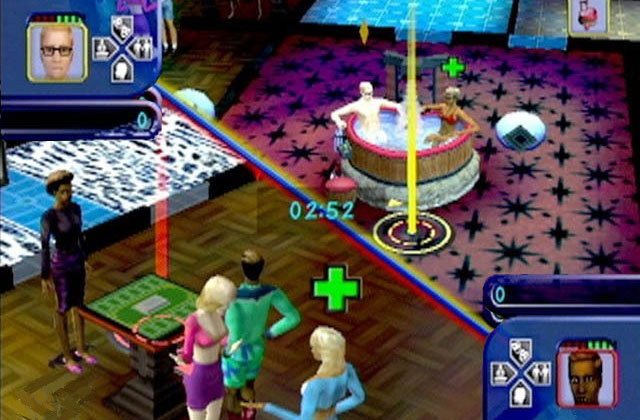
The Sims is a series of life simulation video games developed by Maxis and published by Electronic Arts. Edge of Reality created versions for multiple game consoles. The franchise has sold nearly 200 million copies worldwide, and is one of the best-selling video game series of all time.
I created an initial demo game with simplified world interactions which helped Edge of Reality win the contract. During development I implemented all the in-game UI including character status display and action menus. The character creation was another of my tasks.
Tony Hawk’s Pro Skater
C++
Nintendo 64
PlayStation


Tony Hawk’s Pro Skater is a skateboarding video game series developed by Neversoft and published by Activision. The games contain a plethora of objects like ramps, rails, and half-pipes which can be used to perform tricks. Each trick you perform earns you more points for your score. The series proved to be one of the most popular and best-selling video game franchises of the early 2000s.
I was lead of the teams porting Tony Hawk’s Pro Skater 2 and 3 from the original PlayStation code to work on Nintendo 64 systems.
